In the Spotlight
By Quill🪶 ‘n’ Ink Pot
As I clicked through history while watching the Funeral Procession of Queen Elizabeth II, I found the Queen’s final resting place, the King George VI Memorial Chapel which was commissioned by the Queen herself, was part of St. George’s Chapel at Windsor Castle, this, her chosen place of resting.
After his memorial in 2021, the Duke of Edinburgh, was laid to rest in the Royal Vault. He will now rest in the King George VI Memorial Chapel, with the Queen, following the death of Her Majesty Queen Elizabeth II.
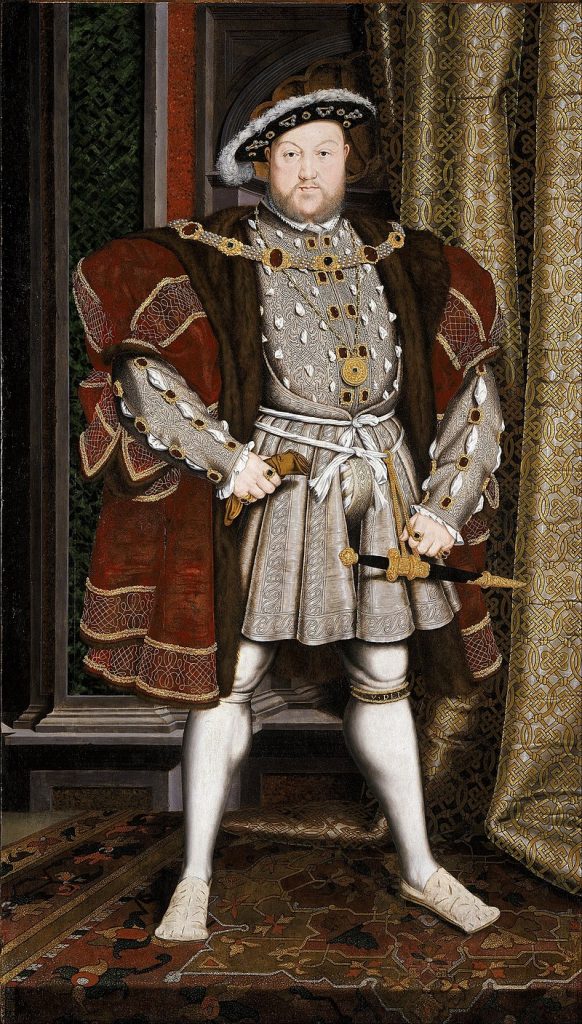
St George’s Chapel is the final resting place of many a monarch including Henry VIII (28 June 1491 – 28 January 1547) and Charles I, who are buried beneath the Choir, along with Henry VIII’s third wife, Jane Seymour, his favourite wife alongside whom he wanted to be interred. The Royal Vault at Windsor which was constructed between 1804 and 1810 for George III, who died in 1820, is one of three former Kings of Britain to be buried there, along with George IV and William IV.
The most iconoclastic of them all is King Henry VIII, who had to face numerous attacks on his most important, imperious and prominent of all decisions to break away from the Catholic Church at the time. It was no easy task to face the opposition in the aftermath of this truly historic move.
This got me thinking of all the King Henry VIII films I had watched and enjoyed watching for their historic as well as for their cinematic capacity. They were pure history unravelling before my very eyes,
The movies ranged from Anne Of The Thousand Days, Henry VIII to Man For All Seasons, spilling over to Oliver Cromwell.
Unbeknownst to Thomas More on whom the film Man For All Seasons is based on, this happens:
“The film covers the years 1529 to 1535, during the reign of Henry VIII. During a private late-night meeting at Hampton Court, Cardinal Wolsey, Lord Chancellor of England, chastises More for being the only member of the Privy Council to oppose Wolsey’s attempts to obtain from the Pope an annulment of Henry VIII‘s marriage to Catherine of Aragon, as their marriage has not produced a male heir. With the annulment, Henry would be able to marry Anne Boleyn, with whom he hopes to father such an heir and avoid a repeat of the Wars of the Roses. More says that he cannot agree to Wolsey’s suggestion that they apply “pressure” on Church property and revenue in England. Unknown to More, the conversation is being overheard by Wolsey’s aide, Thomas Cromwell “
It’s been centuries since the reign of King Henry VIII in the fifteen hundreds and the Church of England stands resolute. It has spread its doctrine to places as far as the United States of America, where Evangelical Christianity thrives today.
The Protestants as they were known from then on have made individualism a possibility from which stems the recognizance of freedom and individual liberties.
I digress …
These beliefs were taken across the world to far away lands with the spread and the dominance of the British Empire. No longer was man submissive to a Church. Man communicated directly with God. The King was representative of God on Earth. Many an English historical play written and performed by William Shakespeare refers to this principle of the divine right of kings.
However, the King now became the all powerful entity on earth and therefore not accountable for his actions. This continued until the British Empire was dissolved and elected leaders became the heads of nations. Yet, the ordinary man’s rights were not restored. These elected officials have become neo-colonial rulers, accountable to none prompting some to say that they were better off during the reign of kings and queens. This is where us the People stand today. This too must come to pass and it will by all means come to pass in the very near future. We are yet devoid of true freedom for the individual.
To get back to our topic at hand, we can solidly attribute the advances in social structure and progression made through the centuries, solely to that one step taken by King Henry VIII in having boldly broken away from and separating England from papal authority.
Professor George W. Bernard argues that:
The dissolution of the monasteries in the late 1530s was one of the most revolutionary events in English history. There were nearly 900 religious houses in England, around 260 for monks, 300 for regular canons, 142 nunneries and 183 friaries; some 12,000 people in total, 4,000 monks, 3,000 canons, 3,000 friars and 2,000 nuns. If the adult male population was 500,000, that meant that one adult man in fifty was in religious orders.[1]
Britain has stood to benefit much from the King’s actions that paved the way for much of the subsequent advancement in human progress that we see in the world right up to today.
Yet, as I read, I find out that King Henry’s wishes for himself upon his death were hardly met by his descendants. Recurring wars and other exigencies of politics and reigns plagued the Country. These being the most vital reasons for much of the neglect that his Royal remains were subject to, through the centuries up until today.
“Of course these days we think of hearses as the black cars that transport the coffin to the funeral, but in 16th-century parlance the vehicle that Henry’s body travelled in was called a chariot. Henry’s chariot was a many-wheeled wagon covered with black velvet, hung with heraldic banners, and drawn by eight strong horses ridden by eight children (the lead used to encase Henry’s embalmed corpse weighed more than half a ton alone, so the whole chariot and its royal cargo must have been enormously heavy). The chariot carried his coffin on top of which was his effigy. The effigy was carved from wood and wax, dressed in expensive robes and wore the Imperial Crown on its head. So valuable was it that when the cortège stopped overnight at Syon the effigy was placed under guard in the vestry. Sadly Henry’s effigy hasn’t survived but there are some fabulous examples of royal funeral effigies on display in the Queen’s Diamond Jubilee Gallery at Westminster Abbey.
So what is, or was, a hearse if it was not a chariot and what’s it got to do with architecture? The answer is that Henry’s hearses were huge temporary canopies under which the coffin and the effigy rested while lying in state. They were surmounted and surrounded by thousands of burning candles, hung with rich black and gold fabrics, and covered with elaborate architectural ornament. Henry had three hearses; one in the chapel at Whitehall Palace; a second for the overnight stop at Syon; and the third and largest (it was probably about 35ft tall) above his burial vault in the quire of St George’s Chapel, Windsor.
Consistently in our research for Portable Palaces we’ve found that craftsmen at the Tudor courts frequently constructed elaborate temporary buildings and carefully selected materials that allowed them to work quickly and easily. In these wax funeral hearse we find the same again. I only wish I could have seen one.”
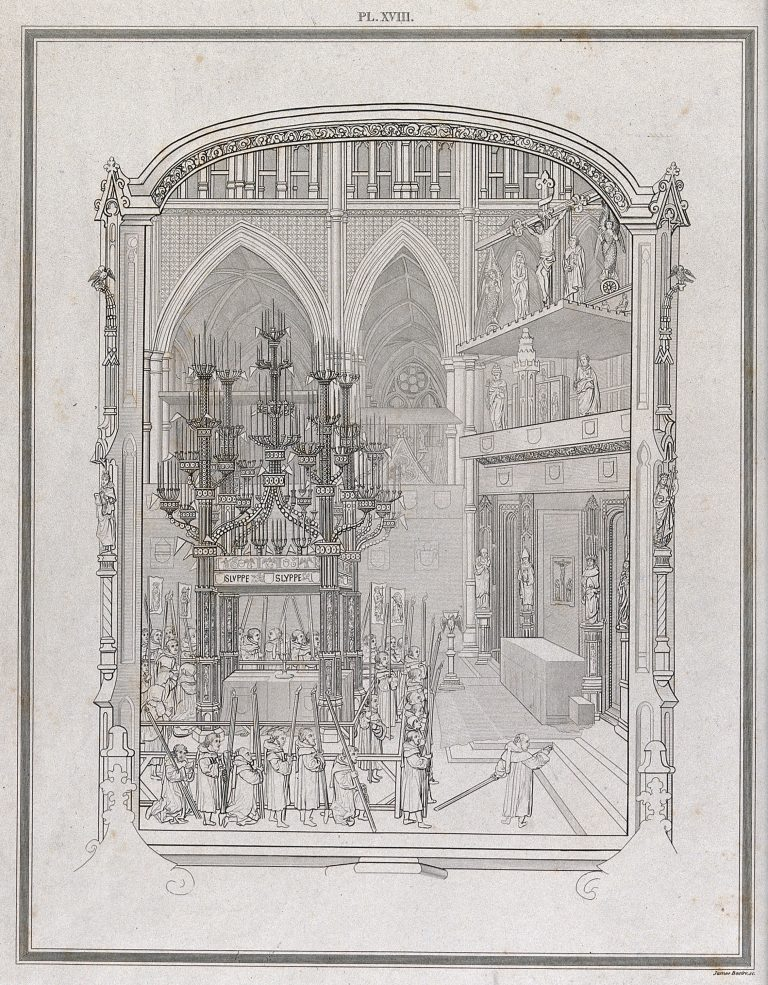
Funeral Procession of Bishop John Islip, 1532. Though not a royal hearse this image gives the best indication of the scale and magnificence of Henry VIII’s hearses. © Wellcome Collection
“King Henry VIII died on January 28, 1547. It was the end of an era. His will commanded he be buried with his beloved wife Jane Seymour, the only wife to give birth to a surviving legitimate male heir. Henry had given her a magnificent funeral after which she was buried in a vault under the quire of St. George’s Chapel in Windsor. This vault was meant to be their temporary resting place.
Henry’s body was bathed, embalmed with spices and encased in lead. It laid in state in the presence chamber of Whitehall surrounded by burning tapers for a few days and was then moved to the chapel. On February 14, the body began its journey from London to Windsor. The procession was four miles long. An elaborate, tall hearse bore the coffin as it rumbled along the road. On top of the hearse was a lifelike wax effigy dressed in crimson velvet with miniver lining and velvet shoes. There was a black satin cap set with precious stones which was covered with a crown. The effigy was adorned with jewels and the gloved hands had rings.
The remains spent the night in Syon Abbey and the next day arrived at Windsor. Sixteen members of the Yeoman of the Guard bore the coffin into the black draped chapel. It was lowered into the vault in the quire. Stephen Gardiner, Bishop of Winchester spoke the eulogy and celebrated the requiem mass as Katherine Parr, the dowager Queen, observed the ceremony from Katherine of Aragon’s oriel window. After the mass, as the trumpets sounded, the chief officers of the King’s household broke their staves of office and threw them into the vault, signalling the end of their service.”
“History of the Tomb
As early as 1518, Henry had plans drawn up for a tomb for himself and his first wife Katherine of Aragon. The initial plans were made by the Italian sculptor Pietro Torrigiano, the same man who designed the tomb for Henry’s parents Henry VII and Elizabeth of York. This tomb can be seen in the Lady Chapel in Westminster Abbey to this day. Torrigiano planned for Henry VIII’s sarcophagus to be made of the same white marble and black touchstone as his father’s; only it was to be twenty-five percent bigger. An argument over compensation for the designing of the plans ensued causing Torrigiano to return to Italy sometime before June 1519. There is evidence Henry considered giving another Italian, Jacopo Sansovino a commission for seventy five thousand ducats to work on a design in 1527.
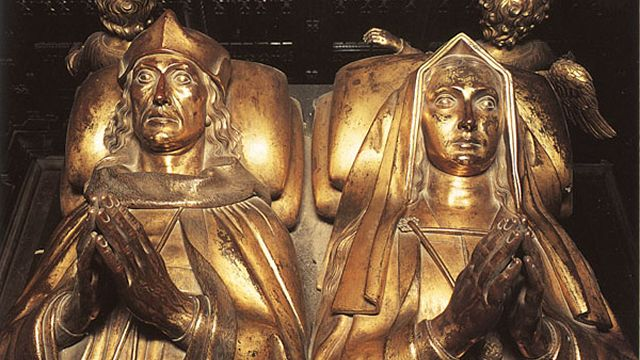
Effigies of Elizabeth of York and King Henry VII in the Lady Chapel of Westminster Abbey
During the seventeenth century, antiquarian John Speed was doing some historical research and unearthed a now vanished manuscript that gave details of Henry VIII’s tomb. It was based on Sansovino’s design from 1527. The plans called for a vast edifice decorated with fine Oriental stones, white marble pillars, gilded bronze angels and life-size images of Henry and his Queen. It was even going to include a magnificent statue of the King on horseback under a triumphal arch. One hundred and forty-four brass gilt figures were to adorn the tomb, including St. George, St. John the Baptist, the Apostles and the Evangelists.
It just so happens that Cardinal Thomas Wolsey, Henry’s chief minister in the early years of his reign, had plans for a resplendent tomb for himself. Benedetto da Rovezzano, an employee of Wolsey’s from 1524 to 1529, kept a comprehensive inventory of the statues and ornamentation for this tomb. When Wolsey died, Henry adopted some components of Wolsey’s tomb for his own. Rovezzano and his assistant Giovanni de Maiano worked on the tomb for Henry from 1530 to 1536.
After Wolsey died, Henry actually appropriated the sarcophagus from his tomb. He planned to have a gilded life-size figure of himself on top. There was to be a raised podium with bronze friezes embedded in the walls along with ten tall pillars topped with statues of the Apostles surrounding the tomb. Between each of the pillars there would be nine foot tall bronze candlesticks. The design called for an altar at the east end of the tomb, topped with a canopy held aloft by four elaborate pillars. This would also include sixteen effigies of angels at the base holding candlesticks. The tomb and altar were to be enclosed by a black marble and bronze chantry chapel where masses could be said for the King’s soul. Had this design been finalised, it would have been much grander than the tomb of Henry’s parents.
Here is more information that proves King Henry VIII, as important and as vital as he was in the history of England and the Church of England, has been dealt with scant respect which must be treated as matter needing immediate rectification.
It is indeed saddening that such an imperious and impressive a king could receive this vastly neglectful attitudinous treatment from many a subsequent monarch. It is so hard to believe that a monarch who brought us much of our liberties up to this day, has not yet received his due reverence, respect and honour from his subjects.
King Henry VIII is supposed to have left enough money to conduct mass for him, up until forever:
“The king had left money for daily masses to be said for his soul until the end of the world. But the Protestant rulers of Edward VI’s government stopped the masses after a year. Henry’s will left instructions for a magnificent tomb to be built.”
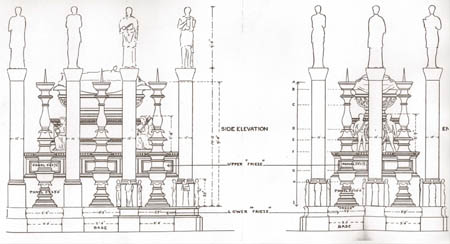
Imagined drawing of Henry VIII’s tomb (Copyright: The Dean and Canons of Windsor) http://www.stgeorges-windsor.org/archives/archive-features/image-of-the-month/title1/henry-viii-tomb.html
“The effigy of the king was actually cast and polished while Henry was still alive and other items were manufactured in workshops in Westminster. Work progressed during the last years of Henry’s reign but wars in France and Scotland were draining the royal treasury and work slowed. Rovezzano returned to Italy due to bad health. Some of the work on the monument continued during Edward VI’s reign but his treasury was always short of funds. Edward’s will requested the tomb be finished. Queen Mary I did nothing on the tomb.
Queen Elizabeth I had some interest in the project. Her minister William Cecil commissioned a survey of the work needed to complete the tomb and new plans were prepared in 1565. Whatever completed items there were in Westminster were moved to Windsor but after 1572, work came to a standstill. The components languished at Windsor until 1646 when the Commonwealth needed funds and sold the effigy of Henry to be melted down for money. Four of the bronze candlesticks found their way to the Cathedral of St. Bavo in Ghent, Belgium.
After the execution of King Charles I in 1649 (or 1648 in the old dating scheme), his remains were hastily placed in the same vault in the Chapel. It was deemed appropriate to bury him there because it was quieter and less accessible than somewhere in London in an effort to reduce the number of pilgrims to the grave of the martyred king. During the reign of Queen Anne, one of her many infants died and was buried in the same vault in a tiny coffin. In 1805, the sarcophagus that had been Wolsey’s and Henry’s was taken and used as the base of Lord Nelson’s tomb in St. Paul’s Cathedral.
The grave was then forgotten until it was rediscovered when excavation commenced in 1813 for a passage to a new royal vault. The old vault was opened in the presence of the Regent, George Prince of Wales, the future King George IV. Several relics of King Charles I were removed for identification. When they were replaced in 1888, AY Nutt, Surveyor of the Fabric to the College of St. George made a watercolour drawing of the vault and its contents. Henry VIII’s coffin appears badly damaged. Jane Seymour’s was intact.”
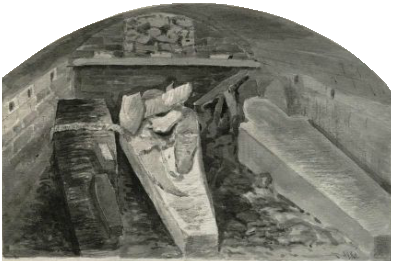
A Y Nutt’s watercolour of Henry VIII’s vault
“Henry’s coffin could have been broken in several ways. The trestle supporting it could have collapsed. It’s possible when they went into the vault to put Charles’ coffin, Henry’s was damaged. It could have collapsed due to pressure from within. Or it’s also possible the coffin fell along the way, causing it to split open.
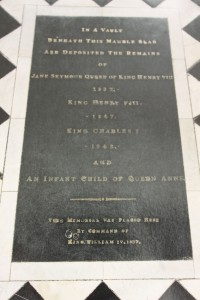
“The Prince Regent requested a marble slab be inserted to mark the grave but this didn’t materialise until the reign of King William IV in 1837. The inscription on the slab reads: In a vault beneath this marble slab are deposited the remains of Jane Seymour Queen of King Henry VIII 1537, King Henry VIII 1547, King Charles I 1648 and an infant child of Queen Anne. This memorial was placed here by command of King William IV. 1837.”
“Because of the subject of this post, we have to address the legend of the dogs licking Henry’s blood as his body spent the night at Syon. The story starts with the sermon by a Franciscan friar named William Petow. He preached at the chapel at Greenwich on Easter Sunday, March 31, 1532. It was the time of the king’s “Great Matter”, the name for Henry’s effort to get a divorce or annulment of his marriage to Katherine of Aragon so he could marry Anne Boleyn.
“Petow compared Henry to King Ahab and Anne Boleyn to Ahab’s wife Jezebel. Jezebel had replaced the prophets of God with pagans as Petow said Anne was endorsing and encouraging men of the New Religion. Petow said Henry would end up like Ahab with dogs licking his blood. Amazingly, Henry only imprisoned Petow for a short time and he escaped England and ended up on the Continent.”
Not only did Petow challenge Henry about trying to put aside Katherine of Aragon, he objected to Anne Boleyn’s efforts to promote the New Religion. He made this very clear in the sermon as the king sat before him in the chapel. Instead of pontificating on the resurrection of Christ, he preached on the verse from the Bible, 1 Kings 22 regarding King Ahab. King Ahab dies from wounds he suffered in a battle. The verse reads: “So the King died and was brought to Samaria, and they buried him there. They washed the chariot at a pool in Samaria (where the prostitutes bathed), and the dogs licked up his blood, as the word of the Lord had declared.”
Something vaguely dismissive and disregarding has taken place to the tomb of King Henry VIII which lies next to his queen, Jane Seymore, whose tomb remains intact even today. It is believed that the lead encasing that covered the King’s remains has something to do with this. For, the lead encasing seems to have burst as it does not seem to be the best of material for the purpose of burial.
Until today, what must be done to lay King Henry VIII to rest as he rightfully must and do deserve, has not been fulfilled. In other words, King Henry VIII’s Will still remains unfulfilled. This puts successive reigns of many different monarchs to shame.
It is true that the House of Tudor to which KIng Henry VIII belonged, gave way to the Stuarts who were historically constantly opposed to the Tudors and to other English monarchies. Although today’s Royal Family belongs to the House of Windsor and does not directly link with the Tudors, it behoves the Windsors to give this matter their immediate and important attention. Your lineage does have at least some connection to that of the past eras and bygone kings and their reigns of Britain.
Something has definitely and determinedly got to be done to rescue KIng Henry VIII’s Royal remains from the disrepair and disarray that it is in today and return them to their due grandeur and reverence that they most rightly deserve.
Much of England’s problems will be solved I believe with the proper burial and the proper respect given to King Henry VIII. The King has never really had a proper burial to date and that’s extremely pitiful and concerning.
This brave, bold and most illustrious of monarchs must be returned to his great glory.
“Henry’s contemporaries considered him to be an attractive, educated and accomplished king. He has been described as “one of the most charismatic rulers to sit on the English throne” and his reign has been described as the “most important” in English history.[2][3] He was an author and composer. As he aged, he became severely overweight and his health suffered. He is frequently characterised in his later life as a lustful, egotistical, paranoid and tyrannical monarch.[4] He was succeeded by his son Edward VI.”
- Wikipedia




